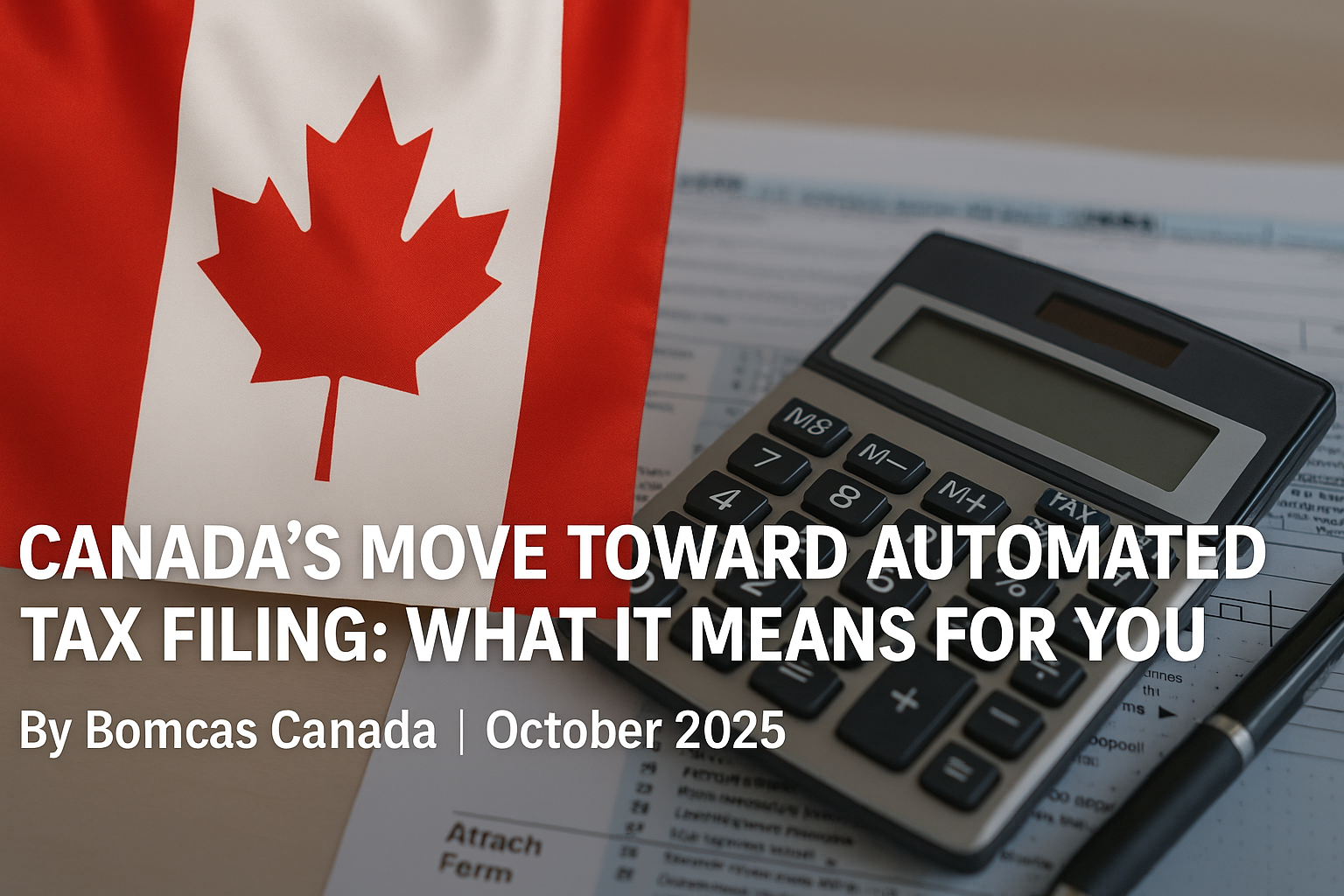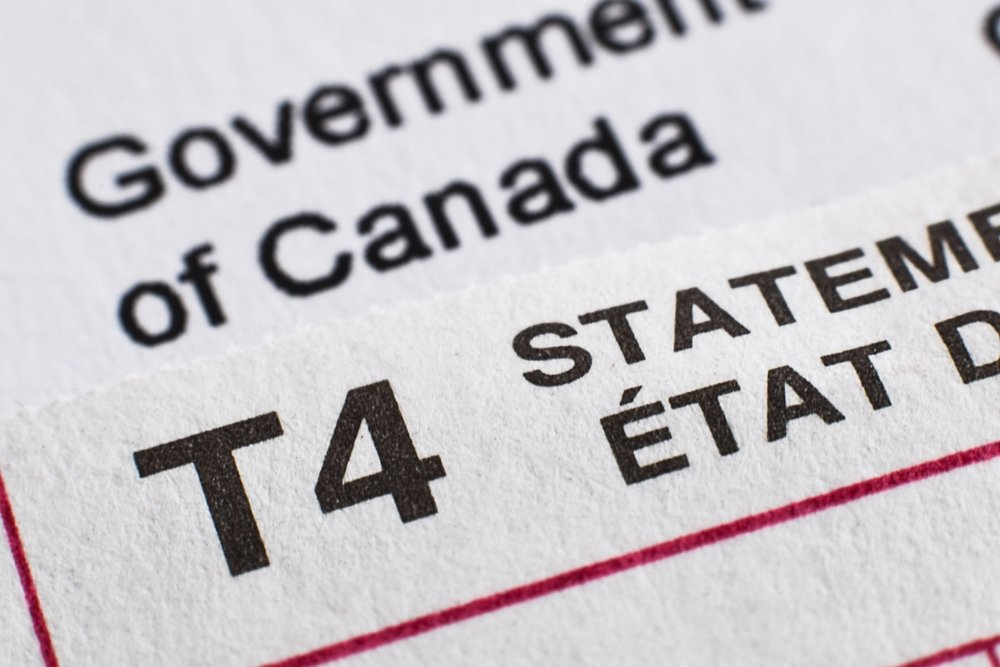Navigating the complexities of U.S. & International Taxes in Canada poses a unique challenge for individuals and businesses alike. With a myriad landscape of income tax obligations, tax treaties, and potential double taxation scenarios, the stakes are high for those managing cross-border income. Understanding the requirements set forth by both the Canada Revenue Agency and the U.S. Internal Revenue Service is essential to ensuring fiscal compliance and maximizing tax benefits. This comprehensive guide is designed to unpack the intricate details of U.S. and international taxation within the Canadian context, highlighting the critical areas where careful attention is needed to avoid pitfalls such as tax evasion and unwarranted tax liabilities.
The article begins with an essential first step: determining your residency status, a crucial factor that influences your tax obligations in both Canada and the United States. It then delves into understanding the tax implications on various forms of income—be it employment income, business profits, capital gains, or royalties. Readers will learn about the pivotal role of the tax treaty, formally known as the Canada-US Tax Treaty, in preventing double taxation, and how to claim the benefits it offers. Subsequent sections will guide on preparing necessary documentation, calculating taxable income, and navigating through tax exemptions and credits available under the treaty. The article acknowledges the importance of adhering to filing requirements and deadlines, and when the complexities of cross-border taxation may necessitate seeking professional advice. This article serves as a roadmap for efficiently managing U.S. & International Taxes in Canada, ensuring compliance, and optimizing tax benefits.
Step 1: Determine Your Residency Status
Determining residency status is a fundamental step in managing U.S. & International Taxes in Canada. This status impacts how individuals and entities are taxed and what obligations they must fulfill. Here, we delve into the specifics of residency rules for both Canada and the United States.
Canadian Residency Rules
Residency status in Canada is primarily based on the concept of significant residential ties. The Canada Revenue Agency (CRA) considers several factors to determine if an individual is a resident for tax purposes:
- Primary Residential Ties: These include owning a home in Canada, having a spouse or common-law partner in Canada, and dependants in Canada.
- Secondary Residential Ties: These may include personal property like cars or furniture, social ties such as memberships in clubs, economic ties including Canadian bank accounts or credit cards, a Canadian driver’s license, and Canadian health insurance.
Individuals may also be categorized under various residency statuses based on their circumstances:
- Factual Residents: Generally, those who maintain significant residential ties with Canada.
- Deemed Residents: Individuals who stay in Canada for 183 days or more in a tax year but do not establish significant residential ties.
- Non-Residents: Typically, those who do not have significant residential ties and live outside Canada throughout the year.
- Deemed Non-Residents: This applies to individuals who would otherwise be considered residents but are treated as residents of another country with which Canada has a tax treaty.
US Residency Rules
For U.S. tax purposes, individuals are classified as residents if they meet certain criteria set forth by the Internal Revenue Service (IRS):
- Substantial Presence Test: To meet this test, one must be physically present in the U.S. for at least 31 days during the current year and 183 days during a three-year period that includes the current year and the two years immediately before, counting all the days of physical presence in the current year, 1/3 of the days in the first year before the current year, and 1/6 of the days in the second year before the current year.
- Green Card Test: Any individual who has been granted lawful permanent resident status in the U.S., as evidenced by the possession of a Green Card, is considered a resident for tax purposes.
Special rules and exceptions apply, such as:
- Exempt Individuals: Certain individuals, such as foreign government-related individuals, teachers, trainees, students, or professional athletes temporarily in the U.S., may be exempt from the Substantial Presence Test.
- Closer Connection Exception: Individuals who meet the substantial presence test but maintain a closer connection to a foreign country may claim this exception to be treated as a nonresident.
Understanding and correctly determining residency status according to these rules is crucial for tax compliance and planning in both countries. Engaging with a knowledgeable tax professional, such as BOMCAS, a Canada U.S. & International Tax Accountant, can provide tailored advice and ensure that all obligations are met while maximizing potential tax benefits.
Step 2: Understand Tax Obligations in Both Countries
Canadian Tax Obligations
In Canada, tax obligations are primarily based on residency status. If one lives and works in Canada, regardless of citizenship, they are required to pay Canadian income tax on money earned within the country. This includes income from employment, as well as earnings from investments such as Canadian stocks, bonds, or mutual funds. The Canada Revenue Agency (CRA) is the governing body responsible for determining an individual’s tax obligations based on their residency status.
Canadian residents are taxed on their worldwide income, which means all foreign and domestic income must be declared on their personal tax returns. However, there are specific scenarios where non-residents or those staying in Canada under certain conditions may not be subject to Canadian taxes. For example, Americans who worked in Canada for a non-resident employer for 182 days or fewer, or earned under $10,000 from such employment, are exempt from paying Canadian taxes.
US Tax Obligations
The United States imposes tax obligations not only based on residency but also on citizenship. This means that U.S. citizens and green card holders have a tax obligation to the U.S., regardless of where they live or where their income is earned. This policy can lead to situations where Americans are responsible for taxes in both the U.S. and their country of residence.
To mitigate the burden of double taxation, the U.S. provides tools such as the Foreign Earned Income Exclusion (FEIE) and the Foreign Tax Credit (FTC). The FEIE allows qualifying U.S. citizens living abroad to exclude up to $120,000 of foreign earned income from U.S. taxes in 2023. The FTC offers a dollar-for-dollar reduction of U.S. tax liability for taxes paid to foreign governments, further alleviating the potential financial strain.
Additionally, U.S. tax obligations extend to various investments and retirement accounts held in Canada, which may not be tax-free in the U.S. This includes accounts like the Registered Education Savings Plan (RESP) and the Tax-Free Savings Account (TFSA), where earnings are subject to U.S. taxes and must be reported as foreign grantor trusts.
Engaging with a knowledgeable tax professional, such as BOMCAS, a Canada U.S. & International Tax Accountant, can provide tailored advice and ensure that all obligations are met while maximizing potential tax benefits.
Step 3: Learn About the US/Canada Tax Treaty
Key Provisions
The US/Canada Tax Treaty, formally known as the Canada-United States Convention with Respect to Taxes on Income and on Capital, plays a crucial role in defining tax responsibilities for individuals and corporations engaging in cross-border activities. Established to prevent double taxation—where the same income is taxed by both countries—the treaty covers a wide range of income types including employment, business profits, dividends, and royalties.
One of the fundamental aspects of the treaty is the definition of residency. Under Article IV, a “resident of a Contracting State” is anyone liable to tax in that state by reason of domicile, residence, or similar criteria. This is pivotal as both the US and Canada tax their residents on worldwide income, whereas non-residents are taxed only on income sourced within the country.
For income from employment, the treaty stipulates that wages earned by a resident of one country are taxable only in that country unless the employment occurs in the other country. For Canadians working in the US or vice versa, this means taxation is generally limited to the country of residence, unless specific treaty exemptions apply.
Benefits and Exemptions
The treaty offers numerous benefits that facilitate smoother fiscal operations across borders. For instance, US dividends paid to Canadian residents are typically subject to a 30% withholding tax. However, under the treaty, this rate is reduced to 15%, easing the tax burden on foreign investors.
Significant exemptions also exist for specific groups such as students, teachers, athletes, and government employees, who may be exempt from the standard rules of taxation under certain conditions. Moreover, the treaty provides mechanisms like the Foreign Earned Income Exclusion (FEIE) and the Foreign Tax Credit (FTC), which are instrumental in mitigating the issue of double taxation for Americans living in Canada.
For those with investments or retirement accounts in both countries, the treaty directs how these should be taxed, often preventing scenarios where U.S. citizens face unexpected taxes on Canadian pensions and tax-free accounts. The IRS treats benefits from the Canadian Pension Plan and Old Age Security as equivalent to U.S. social security payments, which simplifies the tax implications for U.S. citizens.
In complex cases, individuals might need to file Form 8833 with their tax returns to clarify their situation under the treaty. Engaging with a knowledgeable tax professional, such as BOMCAS, a Canada U.S. & International Tax Accountant, can ensure that individuals and corporations make the most of the treaty provisions, maintaining compliance while optimizing tax outcomes.
Step 4: Prepare Necessary Documentation
Preparing the necessary documentation is a crucial step in managing U.S. & International Taxes in Canada. This process involves gathering all relevant financial documents that will support your tax filings in both countries. Engaging with a knowledgeable tax professional, such as BOMCAS, a Canada U.S. & International Tax Accountant, can provide tailored advice and ensure that all documentation is correctly prepared.
Forms to File
For individuals managing cross-border income between the U.S. and Canada, several key forms must be accurately completed:
- 1099 Series Forms: These forms are used for various types of income from U.S. sources, such as dividends (1099-DIV), interest (1099-INT), and real estate transactions (1099-S). Canadians should report these on their tax returns as foreign income, ensuring they align with the correct lines on the T1 form.
- W2 Form – Wage & Tax Statement: This form is crucial for anyone earning employment income in the U.S. It should be reported as foreign employment income on Canadian tax returns, specifically on line 10400 of the T1 form.
- 1042-S Form – Foreign Person’s U.S. Source Income Subject to Withholding: Issued to non-residents earning U.S. income, this form covers various income types like pensions and royalties. It’s essential for ensuring correct tax withholding and reporting in the U.S.
- Canadian Tax Forms: Residents must declare foreign income on their Canadian Tax Return (T1), including dividends and income from foreign stocks. The Foreign Tax Credit can be claimed here to avoid double taxation.
Supporting Documents
Alongside the necessary forms, taxpayers should also gather supporting documents that verify the information submitted on their tax returns:
- Proof of Income and Tax Paid: This includes bank statements, pay stubs, and documents indicating taxes paid in both Canada and the U.S. It’s essential for claims like the Foreign Tax Credit.
- Residency Documents: Documents that prove residency status in either Canada or the U.S. can impact how taxes are filed and what treaties apply.
- Investment Records: For those with investments in both countries, detailed records are necessary to manage potential tax liabilities and treaty benefits correctly.
- Receipts and Expense Records: Particularly for those filing business income or claiming deductions, receipts and detailed records are crucial for accurate tax filing.
- Exchange Rate Information: When converting income or expenses between USD and CAD, official exchange rate documents must be used to ensure accuracy on tax returns.
Keeping these documents organized and readily available can significantly streamline the process of filing taxes in both the U.S. and Canada. It is advisable to maintain these records for at least six years, as tax authorities can request them for review within this period. Engaging with experts like BOMCAS can further ensure that all documentation is correctly handled, maximizing potential tax benefits and maintaining compliance with tax laws in both countries.
Step 5: Calculate Your Taxable Income
Calculating taxable income for U.S. citizens living in Canada or Canadians residing in the U.S. involves understanding the tax obligations and the impact of the U.S./Canada tax treaty. This step is crucial to ensure compliance with tax laws and to optimize tax benefits. Engaging with a knowledgeable tax professional, such as BOMCAS, a Canada U.S. & International Tax Accountant, can provide tailored advice and ensure accurate tax calculations.
Determining Canadian Income
Canadian residents are taxed on their worldwide income, which includes all income earned within and outside of Canada. If you are a Canadian resident, you must declare all foreign and domestic income on your personal tax return. This encompasses employment income, business profits, capital gains, and investment income, such as dividends from Canadian stocks, bonds, or mutual funds.
For U.S. citizens who are Canadian residents for tax purposes, the calculation of taxable income includes all global income, not just the income earned in Canada. However, there are specific exemptions under the U.S./Canada tax treaty that might apply. For instance, if you are an American working in Canada for a non-resident employer and lived there for 182 days or fewer or earned under $10,000, you are exempt from Canadian taxes.
It’s also important to note that as a non-resident, you are only required to pay Canadian tax on Canadian-sourced income. This includes income from employment in Canada or business carried on in Canada. Proper documentation and understanding of treaty benefits are essential to claim any exemptions.
US Income Calculations
The U.S. taxes individuals based on both citizenship and residency. U.S. citizens and green card holders must report their global income on their U.S. tax returns, regardless of where they live. This includes income from employment, business activities, investments, and other sources.
For U.S. citizens living in Canada, the Foreign Earned Income Exclusion (FEIE) and the Foreign Tax Credit (FTC) are valuable tools to prevent double taxation. The FEIE allows you to exclude a certain amount of your foreign earned income from U.S. taxes, while the FTC provides a credit for taxes paid to a foreign government, which can reduce your U.S. tax liability on the same income.
When calculating U.S. taxable income, it’s crucial to consider any income that might be exempt under the U.S./Canada tax treaty. For example, benefits received from Canadian public pensions, such as the Canada Pension Plan and Old Age Security, are treated like U.S. social security payments for tax purposes, potentially offering tax relief.
Each tax scenario may have its complexities, and the interplay between Canadian and U.S. tax laws can be challenging. Therefore, maintaining accurate records and consulting with a tax professional like BOMCAS can be indispensable in navigating these waters effectively.
Step 6: Avoid Double Taxation
Avoiding double taxation, a significant concern for individuals and businesses dealing with cross-border income between the U.S. and Canada, is effectively managed through mechanisms provided by the U.S./Canada Tax Treaty. This treaty, along with other tools such as the Foreign Earned Income Exclusion (FEIE) and the Foreign Tax Credit (FTC), play crucial roles in ensuring that income is not taxed twice by both jurisdictions. Engaging with a knowledgeable tax professional, such as BOMCAS, a Canada U.S. & International Tax Accountant, can provide tailored advice and ensure compliance while optimizing tax benefits.
Using Foreign Tax Credits
The Foreign Tax Credit (FTC) is a vital tool for U.S. citizens and Canadian residents who face potential double taxation on their income. This credit allows taxpayers to offset taxes paid in one country with their tax liabilities in the other country, effectively reducing their overall tax burden. For example, U.S. citizens who pay income tax to the Canadian government can claim the FTC on their U.S. tax returns to reduce their U.S. tax liability on the same income. Similarly, Canadians can claim a credit for taxes paid to the U.S. when filing their Canadian tax returns.
To utilize the FTC effectively, individuals must provide documentation of the foreign taxes paid. This includes completing IRS Form 1116 for U.S. taxpayers, which helps calculate the credit based on the taxes paid or accrued to a foreign country. In Canada, taxpayers complete Form T2209, Federal Foreign Tax Credits, to calculate their credit for foreign taxes paid.
Claiming Deductions
In addition to tax credits, taxpayers can reduce their taxable income through various deductions. These deductions are applicable to both U.S. and Canadian tax residents and include expenses related to earning income in both countries. For instance, U.S. citizens can deduct contributions to Canadian pension plans such as the Canada Pension Plan (CPP) and Quebec Pension Plan (QPP) on their U.S. tax returns. Similarly, Canadians can claim deductions for expenses incurred in earning U.S. income, such as travel and lodging costs.
Taxpayers should review all deductions, credits, and expenses they may claim when completing their tax returns to ensure they are minimizing their tax obligations legally. It is crucial to maintain detailed records of all income and expenses, as these are necessary for supporting claims on tax returns.
By strategically using foreign tax credits and claiming allowable deductions, individuals and businesses can significantly reduce the impact of double taxation, ensuring more of their income is retained. Engaging with professionals like BOMCAS ensures that all available tax benefits are utilized, compliance is maintained, and financial outcomes are optimized.
Step 7: Pay Attention to Deadlines
Filing Dates in Canada
For individuals managing U.S. & International Taxes in Canada, it’s crucial to be aware of key filing dates to avoid penalties and maximize potential benefits. The general filing due date for most taxpayers in Canada is April 30. However, self-employed individuals have a later deadline of June 15. It’s important to note that if this date falls on a weekend, as it does in 2024 (June 15 falls on a Saturday), the deadline extends to the next business day, which is June 17, 2024. Additionally, if you file your taxes electronically by March 15, 2024, you are eligible to receive your Canada Carbon Rebate (CCR) payment by April 15, 2024. Late filings post-March 15 will generally see CCR payments processed 6-8 weeks after assessment.
For those unable to pay their balance owing by April 30, the Canada Revenue Agency (CRA) offers options for payment arrangements or pre-authorized debit (PAD) agreements. These options reflect the understanding of the financial challenges that taxpayers, especially self-employed individuals, may face.
Filing Dates in the US
Navigating U.S. tax obligations from Canada requires understanding the specific deadlines applicable to various taxpayer categories. The standard deadline for U.S. income tax returns filed by residents and citizens is April 15. However, U.S. citizens or residents living abroad, including those in Canada, benefit from an automatic extension to June 15, which will be June 17 in 2024 if the regular deadline falls on a weekend.
Further extensions are available through Form 4868, which extends the filing deadline until October 15, and in special circumstances, a letter to the IRS can extend this deadline by an additional two months to December 15 (December 16 in 2024). For U.S. expats needing to meet specific Foreign Earned Income Exclusion (FEIE) requirements, Form 2350 might be used to extend the filing deadline further to align with these requirements.
It is critical to remember that while these extensions delay the filing deadline, they do not extend the deadline for tax payments. To avoid interest and penalties, taxpayers should ensure that taxes are paid by the original due date or when filing for an extension.
In both countries, staying informed about these critical dates and consulting with a qualified tax professional, such as BOMCAS, a Canada U.S. & International Tax Accountant, can help ensure compliance and optimal tax strategy execution.
Step 8: Seek Professional Help If Needed
When to Consult a Tax Professional
In an increasingly globalized world, the decision to move across the border between Canada and the U.S. can be driven by various personal or professional reasons. However, such a move introduces complex tax implications that require careful management. Individuals, whether they are Canadians working or owning assets in the U.S., or U.S. citizens residing in Canada, face a myriad of tax obligations that can lead to significant penalties and the risk of double taxation if not handled correctly.
Consulting with a tax professional becomes essential when navigating these cross-border tax landscapes. The need for professional advice is particularly acute if you are exploring the idea of relocation or have already made such a move. Tax professionals can provide invaluable assistance beyond mere tax filing; they can offer strategic advice tailored to your unique circumstances, helping to manage your tax obligations effectively and efficiently. This proactive approach not only ensures compliance with the tax laws of both countries but also aligns with your personal financial goals, ultimately alleviating the stress associated with cross-border tax planning.
Choosing a Qualified Advisor
Selecting the right tax advisor is crucial in managing the complexities of cross-border taxation between Canada and the U.S. A qualified advisor should have a robust understanding of the tax laws in both countries and how they interact. This expertise is vital in providing accurate and practical tax advice, especially in a landscape where tax regulations continually evolve.
A qualified U.S. tax advisor should possess a solid academic background in U.S. tax law, supplemented by extensive practical experience. This combination enables them to navigate the intricate details of cross-border taxation, identify potential issues, and offer solutions that mitigate tax liabilities while ensuring compliance. It is advisable to choose advisors who are not only knowledgeable but also stay current with the latest tax developments through continuous education and professional engagements.
Professionals like BOMCAS, which offers services as a Canada U.S. & International Tax Accountant, embody the ideal attributes of a qualified advisor. They are equipped with a team of diverse lawyers and accountants licensed to practice in both Canada and the U.S., providing a broad range of services from tax compliance to personalized tax planning. Their deep industry knowledge and commitment to understanding your specific needs make them a reliable partner in navigating the complexities of international taxes.
By engaging a qualified tax professional, individuals can ensure that their tax strategies are both effective and compliant, providing peace of mind and potential financial benefits in the complex arena of cross-border taxation.
Conclusion
Navigating the complexities of U.S. & International Taxes in Canada requires a strategic approach and in-depth understanding of bilateral tax agreements and local laws. The journey through the landscape of tax obligations, from determining residency status to claiming foreign tax credits and meeting filing deadlines, underscores the necessity for meticulous planning and compliance. The essence of this pathway lies in leveraging treaty benefits, understanding the implications of dual taxation, and optimizing tax benefits through informed decision-making. Engaging with professionals like BOMCAS, a Canada U.S. & International Tax Accountant, can significantly ease the complexities of aligning with tax requirements while strategically managing cross-border income.
The insights provided in this article not only aim to educate but also to empower individuals and businesses navigating through the maze of taxation laws between the U.S. and Canada. It’s imperative to remember that every tax scenario presents unique challenges and opportunities. Seeking personalized advice from committed experts such as BOMCAS ensures that tax strategies are effectively aligned with personal and corporate financial goals. This approach not only mitigates risks but also capitalizes on available benefits to optimize fiscal health in the intricate dance of cross-border taxation.










 View Our Location
View Our Location





 181 Meadowview Bay, Sherwood Park, AB T8H 1P7, Canada (Online Clients Only)
181 Meadowview Bay, Sherwood Park, AB T8H 1P7, Canada (Online Clients Only)